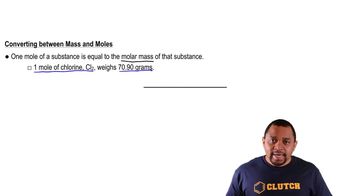Here are the essential concepts you must grasp in order to answer the question correctly.
Molar Mass
Molar mass is the mass of one mole of a substance, typically expressed in grams per mole (g/mol). It is calculated by summing the atomic masses of all the atoms in a molecule. For example, xenon (Xe) has a molar mass of approximately 131.29 g/mol, which is essential for converting moles to grams.
Recommended video:
Conversion from Moles to Grams
To find the mass of a substance in grams from its amount in moles, you multiply the number of moles by the molar mass of the substance. The formula is: mass (g) = moles × molar mass (g/mol). This conversion is fundamental in stoichiometry and helps in quantifying reactants and products in chemical reactions.
Recommended video:
Mass and Moles Conversion
Stoichiometry
Stoichiometry is the branch of chemistry that deals with the quantitative relationships between the amounts of reactants and products in a chemical reaction. It allows chemists to predict how much of each substance is needed or produced, based on balanced chemical equations. Understanding stoichiometry is crucial for solving problems involving moles and mass.
Recommended video:
 Verified step by step guidance
Verified step by step guidance


